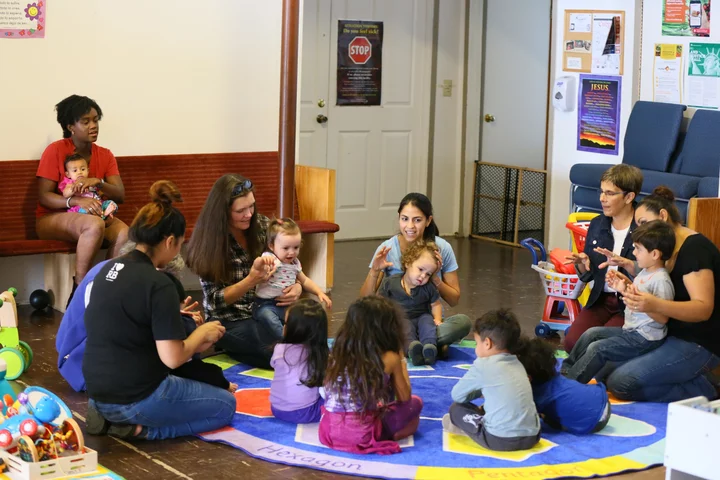Image via First 5 Humboldt Facebook page.
###
PREVIOUSLY: Smokers Fund California’s Early Childhood Programs. What Happens When They Quit?
The following was submitted by First 5 Humboldt:
A recent CalMatters story highlighted the funding challenges facing First 5 organizations throughout California, and we at First 5 Humboldt wanted to share some local context about how declining revenue is affecting us here in Humboldt County, and how we are adapting in response.
First 5 Humboldt is a local public agency working to improve the health, early learning, and well-being of young children and their families in Humboldt County since 1998. That’s when California voters approved Proposition 10, creating a First 5 organization in every county with funding from significant new taxes on tobacco.
This “sin tax” approach has helped accomplish two very different and important goals: reducing the use of tobacco and funding local programs to support young children and families. Unfortunately, this approach also created a declining funding source for First 5 Humboldt and our fellow County First 5’s statewide, and that decline has now accelerated.
First 5 Humboldt funds are under local control, with a nine-member Commission appointed by the Board of Supervisors determining — with parent and community input — how funds should be spent. Current programs include over 20 free weekday, evening and weekend Playgroups throughout the County for families with young children, which include early developmental screening; local parenting education and support services, including a partnership with Open Door Community Health Centers; supporting local child care providers with training, mentoring, and stipends to support quality care and stabilize child care availability; helping fund children’s services in the County Library network; advocating for children and families in local and statewide policy; helping support families at risk of substance use disorder; working with and coordinating local home visiting programs; raising awareness of the effect of trauma on young children and how to counteract it; and providing small grants to local organizations that serve young children and their families.
First 5 Humboldt’s annual revenue from Proposition 10 has declined more than 60 percent from its peak in 2000 and is projected to drop another 28 percent over the next four years.
In response to declining revenue, First 5 Humboldt has worked to access state and federal grants to bring in outside dollars to support local services to children and their families. Over the last seven years, the organization has moved from being solely funded by tobacco taxes to now relying on grants to fund about 50 percent of its work.
While First 5 Humboldt’s efforts at grant writing have been mostly successful, grant funding is unpredictable, short term (one to three years), and targeted to very specific projects or programs defined by the funder.
Unfortunately, we are having to reduce our support for family services. Over the last several years, First 5 Humboldt has had to reduce or eliminate financial support to Family Resource Centers, young children’s dental programs, Humboldt County Office of Education programs focused on early childhood mental health, and our own staff support of Playgroups.
We have reduced our annual community investments by over $300,000 in recent years and will have to continue reducing our investments and our staffing on the current trajectory. During the first several years of Prop 10, the founding Commission set aside funding to be used during the declining revenue years. The current Commission is creating a plan to expend those dollars in a way that will soften the blow to local families and programs over the next few years, despite the coming cuts in services.
Supporting the health and wellbeing of our youngest citizens is both the right thing to do for our state’s children and families and a prudent investment in our future. Proposition 10 has served Californians well, but its success in reducing tobacco use is seriously undercutting the investment in young children and families that Californians support.
Knowing that 90 percent of a child’s brain development occurs before age 5, the state needs to find a sustainable solution for providing services and supports to these most vulnerable California residents.

CLICK TO MANAGE